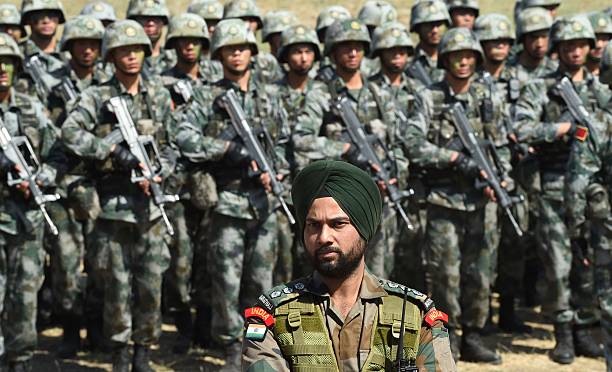
According to Defence Minister Rajnath Singh, Chinese troops sought to unilaterally alter the status quo on December 9 by conducting an incursion (or “atikraman”) across the Line of Actual Control in the Yangtse area of Tawang sector in Arunachal Pradesh.
On Tuesday, December 13, Defence Minister Rajnath Singh informed Parliament that the Indian Army had resisted a Chinese attempt to alter the status quo along the Line of Actual Control (LAC) in Arunachal Pradesh and had driven back soldiers from the People’s Liberation Army who were involved in the incursion attempt. According to him, there had been some injuries among the Indian and Chinese forces. Here is what we currently know.
Conflict between India and China: What transpired in Tawang, Arunachal Pradesh The Defence Minister informed the Lok Sabha that on December 9, PLA troops sought to unilaterally alter the status quo by conducting an incursion (“atikraman”) across the LAC in the Yangtse area of the Tawang sector in Arunachal Pradesh.
This Chinese initiative was met with “firmness” by Indian troops, and there was fighting in this confrontation. The Defence Minister said, “Our Army with great bravery stopped the PLA incursion and compelled them to return to their post.”
He claimed that although there had been some injuries among the soldiers on both sides, no Indian soldiers had been killed or seriously hurt. On December 11, the local Army commander and his Chinese counterpart attended a flag meeting during which the Chinese side was requested to keep the border peaceful. According to Rajnath Singh, the issue has also been brought up diplomatically with the Chinese side.
According to sources, the soldiers on the two sides beat one another with canes and sticks. According to the sources, the Indian soldiers who were hurt during the incident are recovering in a hospital in Guwahati. The tragic Galwan incident in eastern Ladakh in June 2020 was the closest contact between Indian troops and the PLA.
The Army had stated in a statement on December 12 that the “feet-off resulted in minor casualties to few people from both sides.” However, according to the Army, “both parties quickly disengaged from the area.”
On December 9, about 3 am, a fight broke out at a nullah along the LAC in the Tawang heights close to a village called Yangtse in Eastern Tawang. According to military sources, this sector of the LAC is one of the “accepted contested zones” between the two sides.
On either side of the nullah, there are Indian and Chinese forces stationed, however on this particular night, 300 Chinese soldiers entered the Indian side. There were no warning signs about the intrusion, and when about 70 to 80 Indian forces heard the sentries being attacked, they hastily mobilised in the middle of the night to push the intruders back. Several hours were spent in severe hand-to-hand battle using sticks and canes, according to reports.
According to a military source, “There are regions of divergent perception along the LAC in the Tawang sector of Arunachal Pradesh, where both sides monitor the area up to respective claim lines. The pattern dates back to 2006.
Around 250 PLA soldiers transgressed into the area in June 2016 in a manner similar to this one, but no conflicts were noted at the time. There is no way to foresee when the PLA will conduct such operations since “the Chinese perpetually control the escalatory ladder in that area” and they do so “at a point of their choice,” according to a military officer who has served in the region.
According to a senior government source, the PLA “pre-planned” this infraction for a “opportune” period. The area of the skirmish is described as being highly forested, and Chinese troops are positioned in “top of the wall” positions with extensive infrastructure and supply routes.
This was also the moment that some Indian troops withdrew from their posts due to snowfall in the region, providing the Chinese side an additional tactical advantage, according to the source. Additionally, a dense cloud cover made it difficult for Indian satellites to record photographs of any troop buildup.
The incident occurred a few days after China objected to Operation Yudhabhyas, an India-US joint military drill in the Uttarakhand highlands at Auli, claiming it violated boundary accords from 1993 and 1996. The G20, a collection of the world’s top countries that also includes China, has begun its leadership under New Delhi, and events related to this presidency have already begun. At several spots along the 3,000 km-long LAC, there have been ongoing military confrontations.
